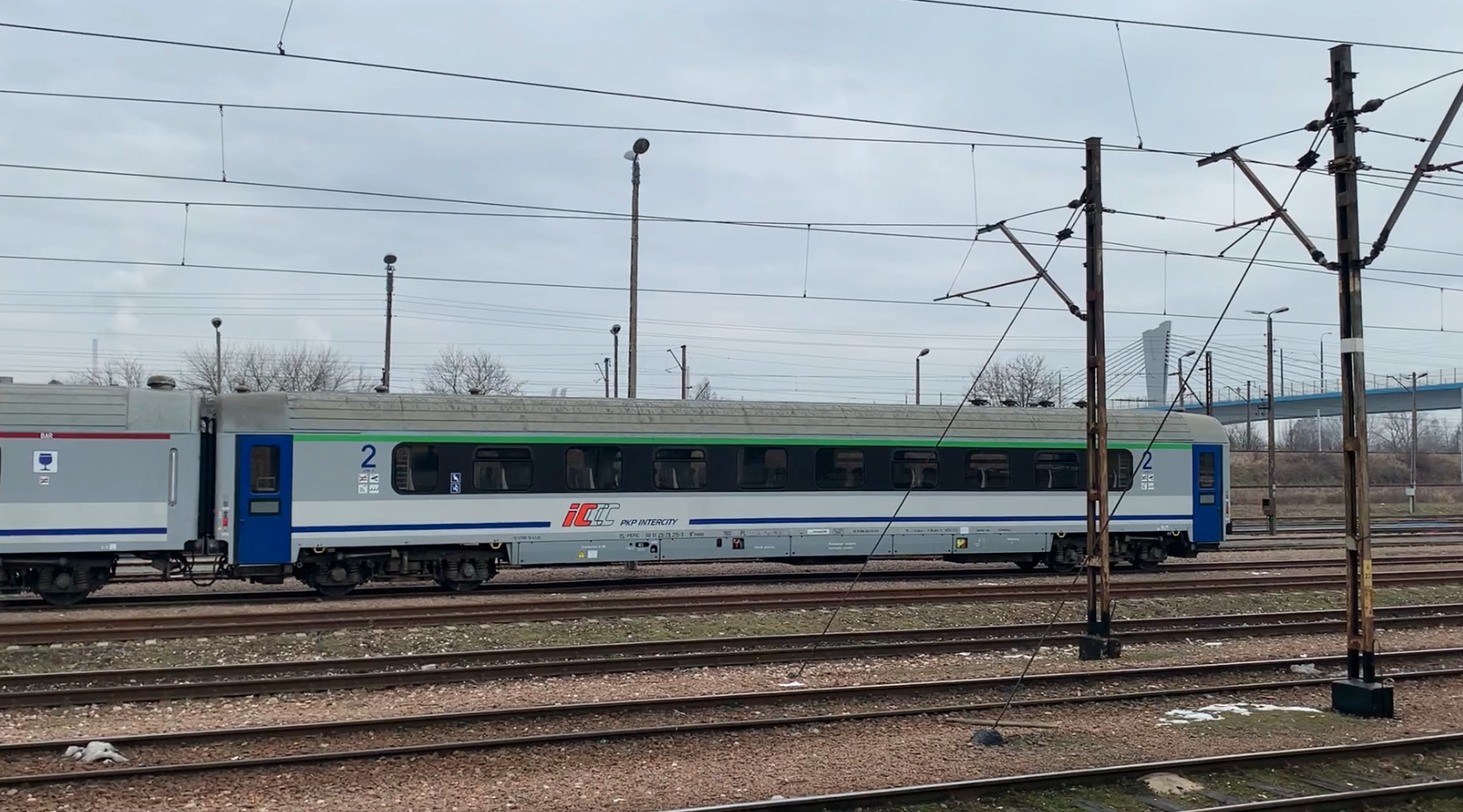Kraków 2025-01-24
Passenger wagons 111AMM-20, B9nopuz.
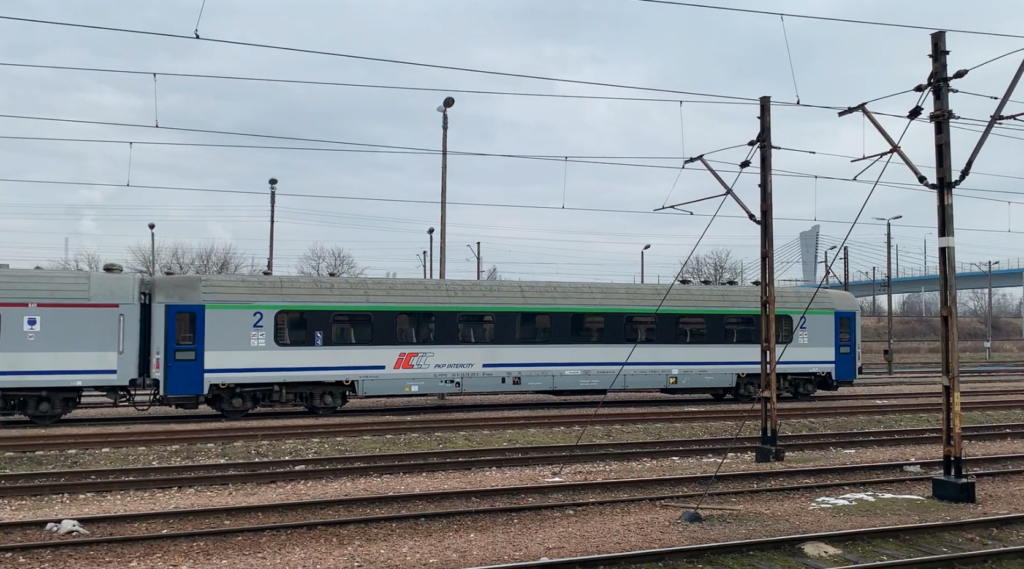
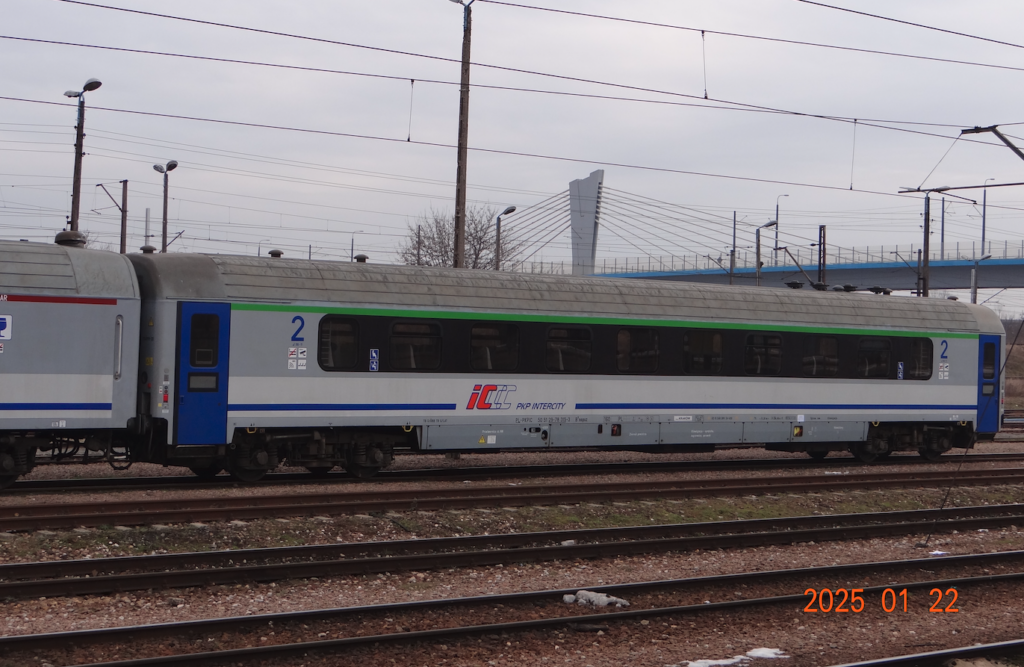
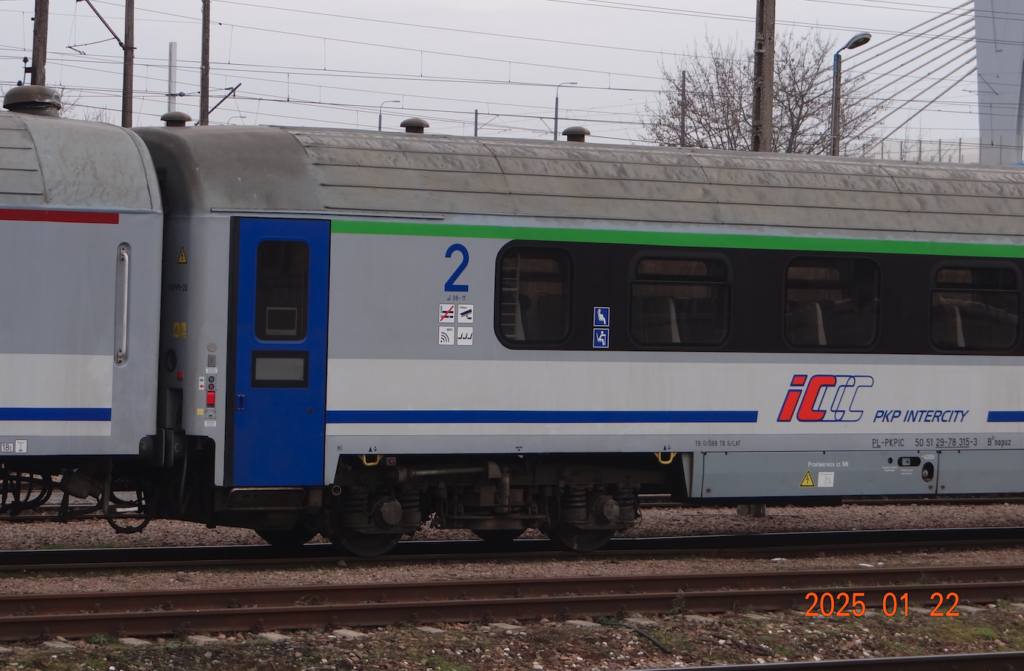
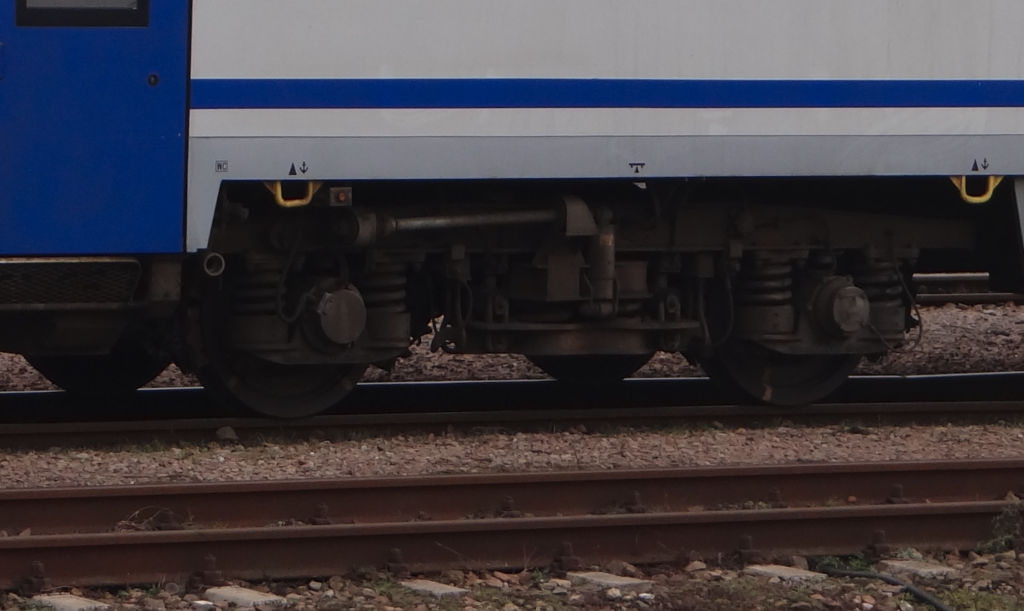
Since the 1990s, the issue of modernization of UIC-Y standard passenger cars has been considered. Initially, modernizations were performed as part of level P5 repairs. Windows were replaced, electric air heating was installed. Air conditioning systems were installed. Rotary-folding entrance doors were replaced with automatic spring-sliding doors. At the same time, no changes were made to the type designation of the wagon, but the letter designations of the wagons were changed, which now say more about the equipment of the wagon and amenities for passengers. It is common practice to designate rebuilt wagons with types that have current certificates of admission to traffic, in order to save on the certification process. Simplifications in the letter description of the wagons make it easier to classify passenger wagons, in terms of their basic features. Subsequent years have shown that this system works. What is more, it allows passengers to choose the optimal wagon and the optimal place in the selected wagon.
Let us remember that in 2013, PKP InterCity put unused wagons up for sale, at a starting price of PLN 450 per tonne. 158 passenger wagons were put up for sale. One wagon weighs from 32,500 kg to 45,500 kg. All wagons were of the UIC-Y standard; classes 1 and 2, couchettes and sleeper wagons. The wagons were standing on sidings at 12 railway stations in Poland. However, as it turned out, their modernization was profitable, because the wagon bodies were in very good condition. The modernized wagon cost 25% of the price of a new wagon purchased in Western Europe.
Companies that specialized in the modernization of passenger wagons were; PESA Bydgoszcz, HCP – FPS in Poznań, ZNTK Mińsk Mazowiecki, NEWAG Nowy Sącz. ZNTK Ostrów Wielkopolski did not survive the political changes.
The travel speed of the wagons was left at 160 km/h. This was due to the lack of locomotives with a speed of 200 km/h. At that time, there were no orders for this type of locomotives, because in Poland the Volksdeutsche, communists and freemasons ruled. The first locomotives with a speed of 200 km/h appeared on Polish tracks during the rule of the United Right, in 2023; NEWAG EU-200 locomotive.
Changes in the modernised carriages.
The seats in the carriages were replaced with more ergonomic ones, often with adjustable backrests, better upholstery and space for USB and 230 V sockets. Installation of visual and audio information systems in the form of LED or LCD screens. Installation of new carriage monitoring systems in the form of CCTV. Thermal and acoustic insulation was replaced for better passenger comfort. The structure of the carriages was reinforced to be able to reach higher speeds of 160 km/h – 200 km/h.
Due to the use of air conditioning, most of the windows do not open. A few windows with a tilting upper part were left. The new step-sliding doors were initially painted grey, but then the UIC standard was introduced and they were given a dark blue (navy blue) colour. Initially, no displays with information about the train route were installed in the doors. Then one display was installed on the side of the body, and currently the displays are mounted on each entrance door. As a result of the modernization and installation of new entrance doors, the layout of the entrance stairs and vestibule has changed. The floor has been lined with stainless steel sheet metal with a grooved, non-slip surface. The entrance is well lit. The layout of the handrails and entrance handles has changed. In some carriages, an additional foldable step has been installed, which allows entry from very low platforms.
The bodies have changed. We remember that the passenger carriages manufactured in HCP had a rolled-up lower edge. Currently, all carriages have a straight edge. This is due to the installation of many components under the carriage frame and they have been additionally covered with aerodynamic covers, which are an extension of the side walls of the body. The roofs have been left smooth, with a sheet thickness of 2 mm or grooved, with a thickness of 1 mm. The vents and their arrangement on the roof have changed. The tail lights are made in LED technology with the possibility of displaying red and white light. The number of windows in the carriage body has changed, depending on the needs.
Due to the installation of closed toilets, the design of this part of the car had to be changed. The old walls were completely dismantled and the floor was cut out. Most of the equipment was installed under the frame. The sewage tank was placed under the frame in the area of the third window, right behind the rolling carriage. The drain pipe is visible between the carriage and the cover of the chassis equipment.
It is worth noting that this was the time when protection of painted surfaces against vandals began to be used. These are special coatings that, when sprayed by vandals, can be relatively easily removed using pressure washers.
In some cars, the 4ANc type rolling carriages were left. However, the rolling carriages were modernized to improve ride comfort and reduce noise. The brakes and train control systems were modernized.
Passenger carriages type 111AMM-20, B9nopuz.
On April 5, 2017, InterCity announced a tender for the modernization of passenger cars. Initially, 183 units. On May 31, 2017, another tender was announced, this time for the modernization of 40 passenger cars, to the so-called COMBO standard. The cars submitted for modernization were standard “Y” cars; types 141A and 111A. Initially, the ordering party requested the replacement of the rolling bogies with a new type. The presented analysis and cost estimate showed that the modernization of classic 4AN bogies is beneficial. The 111A-20 cars were created from an order for periodic repair at the P5 level, together with modernization and after the inspection time at the P3 level. In total, InterCity ordered 83 cars, based on the 141A and 111A types.
According to the ordering party, the modernized cars were to be non-compartment cars, air-conditioned, with closed toilets. The tender was won by the consortium of PESA Bydgoszcz and ZNTK Mińsk Mazowiecki, and the contract was signed on 23 April 2018. In November 2018, InterCity exercised the option right and ordered 42 cars. A total of 125 cars of the following types were sent for modernization: 111Ah, 111Ap, 111As, 111Ay, 111Au and 141A. The first modernized car entered service at the Wrocław locomotive depot in July 2019.
The cars modernized in Mińsk Mazowiecki were designated type 111AMM-20. The first car entered service at the Warszawa Grochów locomotive depot in January 2020. The cars modernized in Mińsk Mazowiecki and Bydgoszcz differ only in details.
The 111AMM-20 car has a non-compartment layout. It is equipped with 72 seats in a 2+2 configuration. Half of the seats are forward facing, and the other half are rear facing. The seats have Braille numbering, which is located at the height of the headrest. The car is equipped with warm LED lighting. The seats are upholstered with a highly durable, dark blue elastic fabric. The headrests have orange headrest protectors with the carrier’s logo. The seats have folding upholstered armrests. The backrest of the seat has a folding table for the passenger in the back, as well as a newspaper compartment, a retractable coat rack and a footrest. The outer seats have a handle by the headrest for a passenger walking down the corridor. 230 V AC sockets are located under the seats. The carriage has four large folding tables, and each table can be used by four passengers. The floor in the carriage is made of non-slip grey plastic. The walls are lined with ash-gray plastic panels, and ventilation holes are located just below the windows. There are shelves for hand luggage above the windows, along the carriage. Heavy luggage is placed on racks at the entrance doors to the main compartment. Six windows are treated as emergency exits and there is a special red hammer near them to break the glass. Monitors for passenger information are mounted under the ceiling. The ceiling is also lined with ash-gray panels. There are two emergency brake handles in the compartment, at the entrance doors. The glass entrance doors are opened automatically with a button. Additionally, there is a door drive switch. The vestibule of the car contains: closed toilets, a cabinet with electronic equipment, railway information displays, a handbrake crank, a 230 V socket (for the cleaning team), the car number and type, a cabinet with a fire extinguisher, a waste bin, a wiper in front of the entrance to the compartment, and handrails. The front doors are orange on the outside and blue on the inside, and have a pneumatic-electric drive. The entrance doors are navy blue, with a sliding-push door. The car has blue entrance doors, in accordance with applicable UIC regulations. There is a window and a railway information display in the door; LED light boards.
The 4AN type rolling bogies were retained, which were modernized to the 4ANcS standard. This was related to the modernization of the braking system. The maximum permissible speed of the car is 160 km/h. It is worth mentioning that the modernized 174A type wagons have retained 25AN4 type rolling bogies. The 230V AC electrical installation is powered by a static converter with autostart. This installation also powers the air supply and air conditioning. The car has full diagnostics of the condition of the car’s components. The control and monitoring panel provides information on the condition of the car, the condition of the air conditioning, converters, toilet, car end lights, the condition of all doors, the condition of the rolling bogies, the braking system and the overheating of the wheel set bearings. The car has a WiFi system with a GSM/LTE signal amplifier.
The car body is painted in the InterCity class 2 standard, in two shades of gray. Additionally, there is a green stripe above the windows and a navy blue stripe above the level of the frame. There is also the InterCity company logo. The windows in the car merge into a uniform black stripe, which gives the vehicle an elegant appearance. All necessary data regarding the car are recorded at the height of the frame. Equipment covers have been installed under the frame, with cut-outs for access to the equipment and operating inscriptions. The wheel sets are exposed and yellow brackets for anchoring the car have been installed in the frame area. The car has 8 brackets of this type. Information stickers have been placed on the car: no smoking, monitored car, on-board WiFi, non-compartment car, car accessible to mothers with children and women in a blessed state, car accessible to disabled people.
Written by Karol Placha Hetman
